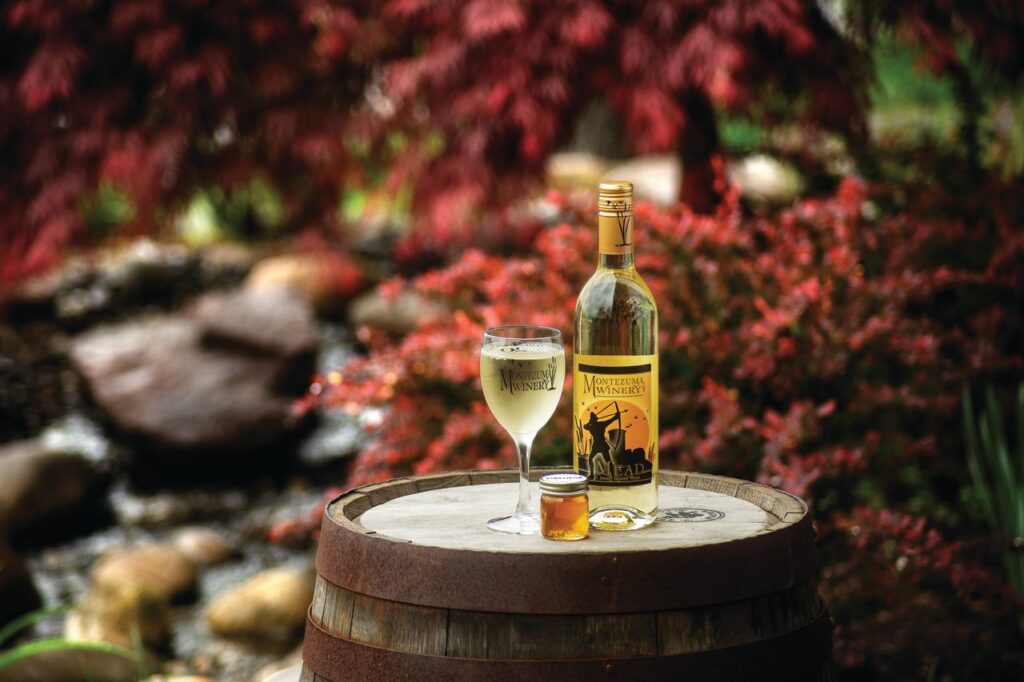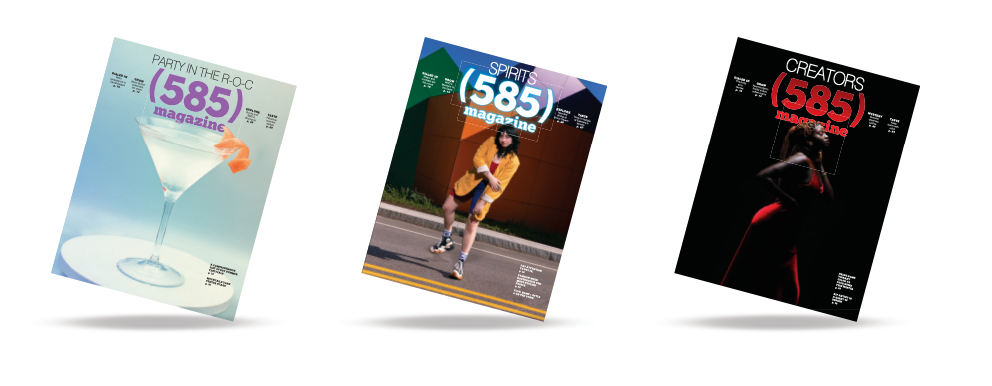
Honestly, I don’t know much about wine. I know I like it. I know I’m a cab sauv girly. I know I’ll drink whatever comes my way. But besides that . . . let’s just say, I’m learning. Honey wine, also referred to as mead, is new to me, and where else to try some than Montezuma Winery.
Unlike most in the industry, this family-owned business started from honeybees. The Martin family ran a commercial beekeeping business up and down the East Coast until co-owner Bill Martin met with an individual at Cornell who had revolutionized the way mead was made.
“I brought some honey, he showed me exactly how he did the process, and the rest was history. We made some mead and decided right then that we’d open a mead-focused winery,” Martin says.
As the business grew, the Martins went from making and selling wine out of their garage to opening their location in Seneca Falls in 2001. They currently have additional wineries in Old Forge and Cooperstown and on Seneca Lake. While still rooted in mead, the Martins eventually left beekeeping behind and turned their focus to including grape wines as well.
“We started producing fruit wines in conjunction with the honey wines to build a portfolio out,” Martin says. “After about three years, we started producing grape wines. We only have a couple honey wines right now, but we have two more we’re working on.”
Honey wine, mead, what’s the difference? They’re interchangeable terms. Honey itself is one of the only foods in the world that won’t spoil. The process of turning it into mead, however, varies greatly from making grape wine.
“Honey is 82 percent sugar, so by introducing water back into the honey, you can mix it down to the proper sugar levels,” Martin says. “So, if you want a drier mead, you’ll mix in more water upfront. Grapes, on the other hand, basically come in at the sugar level that’s perfect for wine. We focus our harvest on the timing. We’re looking at the grape ripeness—how ripe they are determines how much sugar they have, which then dictates how much alcohol the wine will have in the end. But with honey, we can just knock it back to whatever sugar level we want.”
In real simple terms, my mind compared this to making powdered lemonade— the more water, the less sweet. I’d eat powdered lemonade without any water if I could, but Martin had both a classic sweet mead as well as a dry blueberry mead for me to try—I was surprised how much I liked them both.
Starting with the sparkling blueberry honey wine—the drier of the two—I was a bit nervous to take my first sip. When I heard the word “dry” I thought it would be too tangy or bitter for my liking. But was I wrong—it didn’t have the acidity I was expecting, which Martin explained frequently changes our perception of dryness. I ended up leaving with a bottle.
It gives off a very smoky taste and goes down easy. I honestly think I’d prefer it over something sweeter—I didn’t feel overwhelmed by sugar. The earthy undertones would pair absolutely perfect with a bonfire and barbeque.
“When you ferment honey with fruit it’s called a melomel. Sometimes we’ll ferment on the skin, sometimes we’ll crush the blueberries and press them like grapes. Fermentation can go three weeks to a month, whereas with grape wine, it can take as little as a week,” Martin says.
Before I tried the sweeter mead, Martin explained how different floral sources create different types of honey. (It makes perfect sense: What you eat alters what you make, but I had never thought about honey that way before). Montezuma uses clover alfalfa for all its honey.
“If you put a bunch of hives of bees on a buckwheat field, the honey will be jet black,” Martin says. “If the bees are working on strictly orange blossoms, the honey tastes like oranges. With clover alfalfa, the honeys are lighter in color. The general rule of thumb is that if it’s lighter in color, it’s lighter in flavor—not as robust.”
The sweet mead smelled incredibly different from the blueberry melomel. Sweet, clover honey filled the air before I could even take my first sip—wow.
It’s a much fuller wine, and you can pick out light floral notes while still noticing traces of honey. I loved how I could pick out the individual flavors—it’s an excellent dessert wine. I don’t think I could drink glass after glass because of how sweet it is (which is probably a good thing), but I would definitely reach for a pour on a cool summer evening.
“It’s a totally different realm from what grapes are. Comparing this to some of our high-acid wines here, there is no acid in this, so it’s a totally different flavor profile. Being a family-run business where we are really rooted in beekeeping, mead means something to us, and it’s a great product to explore,” Martin says. You can find more information on Montezuma Winery on the website at mfwineriesdistilleries.com, and their honey wine can be purchased at one of their wineries or a variety of local liquor stores.
This article originally appeared in the July/August 2025 issue of (585).
Views: 36




